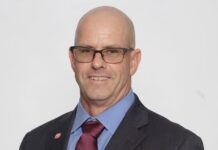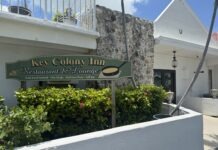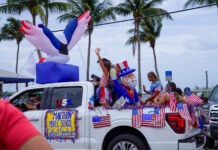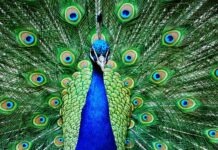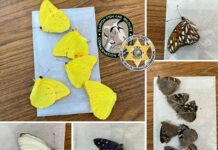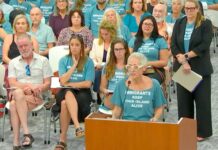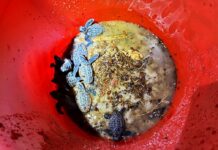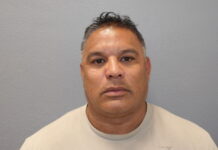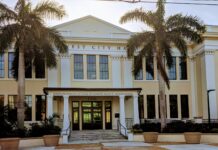
This is not your grandma’s garden club.
Young mothers toting tots and clutching yoga mats filtered into the Key West Tropical Forest and Botanical Garden this week as camera-draped tourists piled out of their rental cars, faces filled with amazement at the warm, fresh air.
Behind the scenes, Ashley Moore is helping students from Mrs. Borden’s Sugarloaf School kindergarten class count pretzel sticks that will make the legs on their spider cookies.

“Welcome to our classroom without walls,” said Education Director Leyla Nedin.
The other half of Mrs. Borden’s class is quietly following Heidi Seidel across the wooden walkways of the tropical forest, tightly clutching their miniature plastic magnifiers and keeping their eyes peeled for different breeds of spiders hiding in the trees. They’re tallying the number of each species of spider they spot on their clip-boarded data sheets.
Nedin joined the staff two years ago and partnered with the Monroe County School District to serve the Lower Keys and Key West’s student population with accessible – and certainly affordable – educational field trips. She has three children of her own on which she spends $50 a week for lunch and admits that another $10 per child for a school field trip would be just too much to afford.
Funded by the Eckerd Family Foundation and the Dogwood Foundation, the botanical garden hosts age-appropriate programs for kindergarten through fifth graders as well as overnight camping trips for sixth through eighth graders and internship programs for eligible high school students.
A perfect partnership with Duke University, where Dr. Stuart Pimm, the garden’s conservation director, is a faculty member also helps bring undergraduate students to Key West to study conservation mechanisms and educational programs for a week each December.
Nedin’s enthusiasm is absolutely infectious.
“This year, we expanded the program to serve elementary students in Marathon at Stanley Switlik,” she elaborated, adding that next academic year, they plan to integrate the younger grades, as well.
Following opening and closing lessons in the classroom from Nedin and Moore, Switlik fourth and fifth graders recently enjoyed embarking on a renewable resource scavenger hunt and building solar ovens with aluminum foil and pizza boxes to bake s’mores at Crane Point.
That same level of inventive and fresh educational lessons will be available this weekend and next at the Key West Tropical Forest and Botanical Garden on Stock Island with two Migration Mania themed events. This weekend’s Great Egg Hunt, in which more than 5,000 colorful candy-filled eggs will be hidden for a hunt that will be followed by educational stations, make and take crafts and even games that focus on migrating birds that use the garden as their last stopover on their way to and from Cuba.
Migration Mania will continue on April 30 at 10 am with “The Great Butterfly Show & Release.” Families can visit a number of butterfly themed activity stations throughout the day, and kids of all ages will enjoy the “Butterfly House Building Station” presented by Home Depot. At noon, adults and children can take a tour throughout the butterfly garden with renowned butterfly enthusiast Jose Muniz. During this walk, families will learn how to identify native species of butterflies found right in our own backyards. The staff will also offer an adult-oriented presentation about invasive iguanas and how they are detrimental to the survival of key butterfly species.
Though the Key West Garden Club did assume responsibility in 1972 for the original tourist attraction built during the Great Depression when Key West went bankrupt in the 1930s, the collection of energetic educators is helping this tourist attraction better serve the local community.
They might even be fostering a future scientist or two.


